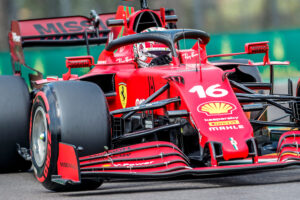 The popularity of F1 is booming with consistent growth in viewership and revenue. Here is what you need to know about this rapidly rising sport.
The popularity of F1 is booming with consistent growth in viewership and revenue. Here is what you need to know about this rapidly rising sport.
With the 2023 Formula One (F1) season underway, it’s hard to miss the fact that F1 is one of the hottest tickets in sports. Whether it is the exotic nature of the cars, the superstar status of the drivers, or the global appeal, F1 has grown in popularity and seen its bottom-line increase. For the 2022 calendar year, F1 saw total revenues of $2.573 billion, up from $2.136 billion for calendar year 2021. And it’s no surprise that women now make up 40% of the global audience. With this in mind, we thought it would be a good time for an overview on the fundamentals of F1 racing.
Cars: Formula One cars are single-seat, open-wheel race cars powered by hybrid engines. They are the most technologically advanced racing machines in the world, with a top speed of over 220 mph.
Tracks: F1 races take place on a variety of circuits, including street circuits, permanent road courses and purpose-built racetracks. The tracks are designed with a mix of high-speed straights, tight corners and sweeping curves.
Race format: A typical F1 race weekend includes three practice sessions, followed by qualifying, and then the race itself. The race distance is typically around 190 miles or 305 kilometers.
Qualifying: Qualifying is used to determine the starting grid for the race. It consists of three rounds, with the slowest drivers being eliminated after each round. The fastest driver starts on pole position, while the rest of the field lines up behind in order of their fastest qualifying time.
Race: The race itself lasts around 90 minutes and is divided into a number of laps. The winner is the first driver to cross the finish line after completing all of the laps. Points are awarded to the top 10 finishers, with the winner receiving 25 points.
Pit stops: During the race, drivers are required to make at least one pit stop to change tires and refuel. Pit stops are a crucial part of the race, with the team’s mechanics having to work quickly and efficiently to get the car back on track as quickly as possible.
Teams and drivers: F1 is a team sport, with each team consisting of two drivers. There are currently 10 teams on the grid, each with their own unique car and driver lineup.
Rules and regulations: F1 is governed by a strict set of rules and regulations that are designed to ensure fairness and safety. These rules cover everything from car design to driver behavior on track.
Championships: The F1 season consists of around 20 races, with drivers and teams competing for two championships: the Drivers’ Championship and the Constructors’ Championship. The driver with the most points at the end of the season is crowned the Drivers’ Champion, while the team with the most points is crowned the Constructors’ Champion.
Strategy: F1 is not just about speed and skill – it’s also about strategy. Teams and drivers must carefully manage their tires, fuel and pit stops to optimize their performance and gain an advantage over their rivals.
Now that you understand the basics, we hope this helps to make the races even more enjoyable.
Sources:
- https://www.forbes.com/sites/maurybrown/2023/03/29/inside-the-numbers-that-show-formula-1s-popularity-and-financial-growth/?sh=51239d834df6
- https://www.libertymedia.com/news/detail/485/liberty-media-corporation-reports-fourth-quarter-and-year
- https://www.sportingnews.com/us/motorsport/news/formula-1-beginners-guide-scoring-system-rules/dwtlsqkyd9g0eefqpf6kpeqp


